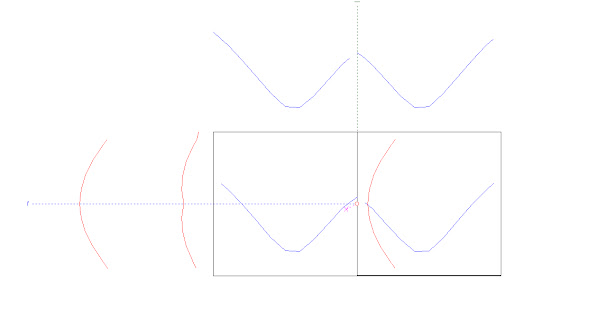My curiosity was sparked on discovering the potential of simple wire antennas modelled in MMANA-GAL when using perfect ground settings recently. Whilst seawater is not perfect ground, it is usually described as 'near-perfect' in radio texts.
I then had a look at other models, notably a centre-fed, two-loop array in vertical polarisation mode.
 |
| MMANA-GAL model of a centre-fed, two-loop array, with currents (red= vertical) |
This model displays very interesting and useful characteristics, inasmuch as it shows multiple, strong lobes from the horizon to quite high angles. Gain values range from 11.1dBi at the horizon, to ~ 8dBi at 40 degrees.
Note that, when used at the coast, the rear lobe of the dipole-like pattern will diminish in strength due to the land in the opposite direction to the sea. However, if working within large sandy or muddy flats, this is not so much the case, and the indicated pattern will tend to be what is realised. There is no way to model this in any software I know of.
 |
The higher lobes mean this antenna is less ideal for DX working, as nearby signals on shorter paths may swamp weaker, more distant signals. It will certainly be a very capable general 6m antenna, with the added bonus of excellent DX capability when propagation favours it.
In practice, I typically put out 25W mean output on SSB, which is as much as is sensible when using a direct-to-car-battery supply, fed with fairly substantial wires. At 11.12dBi, therefore, this 25W will get boosted to 323W by the antenna/environment system.
The model in MMANA-GAL is for 435MHz. It uses a VF of 0.88 for the wire, which is as we might expect and, so the 6m version results in 5.97m x 0.88 = 5.25m wire length per loop, or 1.31m per side. This means a top and bottom support of timber, fibreglass or conducting pipe of 2.5m or 3m standard length should be adequate to build the antenna, with very slightly longer wire connecting those two elements if the 2.5m lengths are used at the top and bottom.
It looks like I have plenty of antenna building to come over the next weeks!
No comments:
Post a Comment